Focus
Focus
Focus
Category Facet
Custom Facet
Search Results
-
Web Content Article · written-by LUCIA ALGISI on-date May 12, 2024 9:24 PM
Bloomberg Hera Q1 2024 Earnings Call (1).pdf Q1 BBNWNRy6J_c https://investornews.gruppohera.it/en/?n=228 Audio recording of the 1Q 2024 video conference.mp3 Financial report as at 31 March...
-
Web Content Article · written-by LUCIA ALGISI on-date May 9, 2023 12:33 PM
Transcript Q1 2023.pdf Transcript H1 2023.pdf Transcript Q3 2023.pdf Bloomberg Hera FY2023 Earnings Call.pdf Bloomberg Hera BP 2027 Update Call.pdf Q1 H1 Q3 Y Business Plan Sustainability...
-
Web Content Article on-date Aug 26, 2021 10:24 AM
1 colonna SI Annual Report 2020 NO No Financial results as of 31/12/2020 Sinistra
-
Web Content Article · written-by Palvi Andrea Tonziello on-date May 11, 2022 12:18 PM
HERA_1Q2022_Transcript.pdf HERA_1H2022_Transcript.pdf HERA_9M2022_Transcript.pdf 21.03.2022-HRA.MI-Transcript FY2022.pdf Transcript BP 2026.pdf Q1 1H 9M Y Business Plan null null null...
-
Web Content Article on-date Aug 26, 2021 10:26 AM
1 colonna SI Annual Report 2019 NO No Financial results as of 31/12/2019 Sinistra
-
Web Content Article this-result-comes-from-the-x-version-of-this-content · written-by Palvi Andrea Tonziello on-date Nov 9, 2021 11:48 AM
Transcript 1Q 2021.pdf Transcript_1H_21.pdf Transcript risultati 3Q 2021.pdf HERA_FY2021_Transcript.pdf 8156009414FD99443B48-2021-12-31-it_preview.xhtml Q1 H1 9M Y Business Plan...
-
Web Content Article on-date Aug 26, 2021 10:29 AM
1 colonna SI Annual Report 2018 NO No Financial results as of 31/12/2018 Sinistra
-
Web Content Article this-result-comes-from-the-x-version-of-this-content on-date Mar 23, 2021 6:06 PM
Transcript_1Q_20.1590659178.pdf Transcript_1H20.1596703225.pdf Transcript 3Q 2020 Transcript_Y2020.pdf Transcript Business Plan to 2024 Q1 H1 9M Y Business Plan Sustainability Report null...
-
Web Content Article on-date Aug 26, 2021 10:52 AM
1 colonna SI Annual Report 2017 NO No Financial results as of 31/12/2017 Sinistra
-
Web Content Article this-result-comes-from-the-x-version-of-this-content on-date Aug 20, 2020 11:29 AM
Transcript_1Q19.1560256495.pdf Transcript_1H19.1566915583.pdf Transcript_3Q19.1576851216.pdf Transcript_4Q_19.1586415299.pdf Q1 H1 9M Y Business Plan Sustainability Report null null null...
-
Web Content Article on-date Aug 26, 2021 10:53 AM
1 colonna SI Annual Report 2016 NO No Financial results as of 31/12/2016 Sinistra
-
Web Content Article this-result-comes-from-the-x-version-of-this-content on-date Jan 20, 2021 7:25 PM
Transcript_1Q_2018.1529323276.pdf Transcript_2Q_2018.1536939478.pdf Transcript_3Q_18.1551693284.pdf Transcript_Y18.1560256715.pdf Q1 H1 9M Y Business Plan Sustainability Report null null...
-
Web Content Article on-date Aug 26, 2021 10:53 AM
1 colonna SI Annual Report 2015 NO No Financial results as of 31/12/2015 Sinistra
-
Web Content Article this-result-comes-from-the-x-version-of-this-content on-date Aug 20, 2020 11:51 AM
Transcript_1Q2017.1496938153.pdf GruppoHera_transcript_1H2017.1504004890.pdf Transcript_3Q_2017.1529323710.pdf Transcript_Y2017.1529323499.pdf Q1 H1 9M Y Business Plan Sustainability Report ...
-
Web Content Article on-date Aug 26, 2021 10:54 AM
1 colonna SI Annual Report 2014 NO No Financial results as of 31/12/2014 Sinistra
-
Web Content Article this-result-comes-from-the-x-version-of-this-content on-date Aug 20, 2020 11:59 AM
Transcript_1Q2016.1468502631.pdf Transcript_1H2016.1471882357.pdf Transcript3Q_2016.1483542877.pdf Transcript_Y2016.1496940355.pdf Q1 H1 9M Y Business Plan Sustainability Report null null...
-
Web Content Article on-date Aug 26, 2021 10:54 AM
1 colonna SI Annual Report 2013 NO No Financial results as of 31/12/2013 Sinistra
-
Web Content Article this-result-comes-from-the-x-version-of-this-content on-date Aug 20, 2020 12:10 PM
Transcript_1Q2015.1433838865.pdf Transcript_1H2015.1442406786.pdf Transcript_3Q2015.1453374100.pdf Transcript_Y2015.1490709198.pdf Q1 H1 9M Y Business Plan Sustainability Report null null...
-
Web Content Article on-date Aug 26, 2021 10:56 AM
1 colonna SI Annual Report 2012 NO No Financial results as of 31/12/2012 Sinistra
-
Web Content Article this-result-comes-from-the-x-version-of-this-content on-date Aug 20, 2020 12:20 PM
Transcript_1Q2014.1402655015.pdf Transcript_1H2014.1410878899.pdf Transcript_3Q2014.1420711133.pdf Transcript_Y2014.1433839164.pdf Q1 H1 9M Y Business Plan Sustainability Report null null...
-
Web Content Article on-date Aug 26, 2021 10:56 AM
1 colonna SI Annual Report 2011 NO No Financial results as of 31/12/2011 Sinistra
-
Web Content Article this-result-comes-from-the-x-version-of-this-content on-date Aug 20, 2020 2:27 PM
Transcript_1Q_2013.1369215358.pdf Transcript_1H_2013.1378478959.pdf Transcript_3Q_2013.1385396708.pdf Transcript_Y2013.1399302078.pdf Q1 H1 9M Y Business Plan Sustainability Report null...
-
Web Content Article on-date Aug 26, 2021 10:57 AM
1 colonna SI Annual Report 2010 NO No Financial results as of 31/12/2010 Sinistra
-
Web Content Article this-result-comes-from-the-x-version-of-this-content on-date Aug 20, 2020 2:36 PM
Q1_2012_Transcript.1337672655.pdf Transcript_H1_2012.1346336789.pdf Transcript_9M_2012.1353582775.pdf Transcript_Y2012.1366641864.pdf Q1 H1 9M Y Business Plan Sustainability Report null...
-
Web Content Article this-result-comes-from-the-x-version-of-this-content on-date Aug 20, 2020 3:14 PM
Transcript_Q1_2011.1305897053.pdf Transcript_hera_group_H12011.1314862666.pdf Transcript_3Q_2011.1322050486.pdf Transctipt_A2011.1333095941.pdf Q1 H1 9M Y Business Plan Sustainability Report ...
-
Web Content Article this-result-comes-from-the-x-version-of-this-content on-date Aug 20, 2020 3:22 PM
Transcript_1Q2010.1274274421.pdf Transcript_1H2010.1283344745.pdf Transcript_3Q2010.1293026153.pdf Transcript_A2010.1301581464.pdf transcript_business_plan_010_014.1288185410.pdf Q1 H1 9M Y...
-
Web Content Article this-result-comes-from-the-x-version-of-this-content on-date Aug 20, 2020 3:50 PM
Transcript_Q1_2009_results.1250683604.pdf Transcript_H1_09_Conference_call.1251737590.pdf Transcripit_3Q_09_Conference_call.1258623622.pdf Transcript_A2009.1270731696.pdf...
-
Web Content Article this-result-comes-from-the-x-version-of-this-content on-date Aug 20, 2020 3:57 PM
Q1 H1 9M Y Business Plan Sustainability Report null null null null null null null null null null null null audioconference 3Q2008.1233671471.1247558480.mp3 HeraBE08 pi2011...
-
Web Content Article this-result-comes-from-the-x-version-of-this-content on-date Aug 20, 2020 4:39 PM
Q1 H1 9M Y Business Plan Sustainability Report null null null null null null null null null null null null 1qresults 14 5 07 eng.1190285687.mp3 hera 1h07results eng.1219674535.mp3...
-
Web Content Article this-result-comes-from-the-x-version-of-this-content on-date Aug 20, 2020 4:45 PM
Q1 H1 9M Y Business Plan Sustainability Report null null null null null null null null null null null null first q results 11 5 06.1148985337.mp3 business plan06-09 english...
-
Web Content Article this-result-comes-from-the-x-version-of-this-content on-date Aug 20, 2020 4:49 PM
Q1 H1 9M Y Business Plan Sustainability Report null null null null null null null null null null null null conference call 3q2005 en.1215073784.mp3 null null null null null...
-
Web Content Article · written-by Palvi Andrea Tonziello on-date Nov 15, 2023 11:01 AM
NRRP invoicing - notice to suppliers (110 kb - PDF) img_preview_PNRR.jpg
-
Web Content Article this-result-comes-from-the-x-version-of-this-content on-date Aug 20, 2020 4:53 PM
Q1 H1 9M Y Business Plan Sustainability Report null null null null null null null null null null null null null null null null null null ...
-
Web Content Article this-result-comes-from-the-x-version-of-this-content on-date Apr 1, 2021 11:54 AM
Q1 H1 9M Y Business Plan Sustainability Report null null null null null null null null null null null null null null null null null null ...
-
Web Content Article this-result-comes-from-the-x-version-of-this-content on-date Apr 1, 2021 11:56 AM
Q1 H1 9M Y Business Plan Sustainability Report null null null null null null null null null null null null null null null null null null ...
-
Web Content Article on-date Oct 21, 2020 4:01 PM
Download Center Download all Gruppo Hera Documents Download Center.png Find out more
-
Web Content Article on-date Oct 21, 2020 4:00 PM
Calendar To stay updated with Hera Events Calendar Find out more
-
Web Content Article · written-by LUCIA ALGISI on-date Jun 20, 2024 6:43 PM
Market opportunities.pdf
-
Web Content Article · written-by LUCIA ALGISI on-date Jun 19, 2024 12:58 PM
For the fourth consecutive year, we are on the podium of the overall index ranking, which rewards Italian companies that stand out for integrating ESG factors into their governance
-
Web Content Article · written-by LUCIA ALGISI on-date Jun 19, 2024 12:51 PM
We have confirmed our position as the Italian company that has most fully and consciously integrated sustainability policies into its business strategies. This is proven by the ESG Identity...
-
Web Content Article · written-by LUCIA ALGISI on-date Jun 19, 2024 11:15 AM
2024-06-19 Press_Hera_ESG.jpg For the fourth consecutive year, the Group is on the podium of the overall index ranking, which rewards Italian companies that stand out for integrating ESG factors...
Comunicati stampa: Hera Spa Price sensitive -
Web Content Article · written-by Lorenzo Senaldi on-date Jun 18, 2024 3:50 PM
Hera's senior management attends the Mediobanca's financial event, where the major Italian companies will have the opportunity to present their business to national and international funds, both...
Tipologia Evento: Price sensitive -
Web Content Article · written-by LUCIA ALGISI on-date Jun 11, 2024 1:21 PM
2024-06-11 The Hera Group, through its subsidiary operating in the natural gas distribution sector, strengthens its presence in the area served centrata This morning, at the Hera Group’s...
Comunicati stampa: Hera Spa M&A Price sensitive -
Web Content Article · written-by LUCIA ALGISI on-date May 27, 2024 4:26 PM
Shareholder agreements in force as of July 1, 2024 Information extract from 2024-2027 Level I pursuant to article 130 of the Consob Regulation, 23 May 2024 Information extract Level II MODENA...
-
Web Content Article · written-by Mario Egidio on-date May 26, 2024 12:35 PM
Comunicati stampa: Sustainability Research and Development Financial Results Products/Services M&A Shareholders’ meeting -
Web Content Article · written-by Mario Egidio on-date May 26, 2024 12:34 PM
Tipologia DL: Environment The Group Sustainability Investor Energy Governance -
Web Content Article · written-by Mario Egidio on-date May 26, 2024 12:33 PM
Tipologia Web Channel: Environment Hera on TV School Corporate film Highlights Plants Working at Hera Group Awards Social responsibility Investor relations -
Web Content Article · written-by Mario Egidio on-date May 26, 2024 12:32 PM
-
Web Content Article · written-by Mario Egidio on-date May 26, 2024 12:29 PM
Categoria Progetto: Energy Efficiency Innovation Heratech Project Circular Economy Water Project -
Web Content Article · written-by LUCIA ALGISI on-date May 24, 2024 12:30 PM
SI Page update 6 June 2024 NO No Sinistra
-
Web Content Article · written-by LUCIA ALGISI on-date May 21, 2024 1:30 PM
SI Page update on 15 May 2024 NO No Sinistra
-
Web Content Article · written-by LUCIA ALGISI on-date May 15, 2024 10:42 PM
SI Page update on 15 May 2024 NO No Sinistra
-
Web Content Article · written-by LUCIA ALGISI on-date May 15, 2024 9:49 PM
SI Page update on 15 May 2024 NO No Sinistra
-
Web Content Article · written-by LUCIA ALGISI on-date May 15, 2024 2:51 PM
SI Page update on 27 June 2024 NO No Sinistra
-
Web Content Article · written-by LUCIA ALGISI on-date May 15, 2024 11:00 AM
2024-05-15 Kindly note that as of today the minutes of the Shareholders Meeting held on 30 April 2024, as well as the articles of association containing the amendments approved by the...
Comunicati stampa: Shareholders’ meeting Price sensitive Hera Spa -
Web Content Article · written-by LUCIA ALGISI on-date May 15, 2024 10:22 AM
Through its subsidiary Inrete Distribuzione Energia, the Group was awarded the tender for the gas distribution plants and network serving the municipality of Argenta in Ferrara area
Comunicati stampa: Price sensitive M&A Hera Spa -
Web Content Article · written-by LUCIA ALGISI on-date May 14, 2024 1:06 PM
The consolidated quarterly report at 31 March shows improvement in the main operating and financial indicators
-
Web Content Article · written-by LUCIA ALGISI on-date May 14, 2024 11:37 AM
SI Page update on 15 May 2024 NO No Sinistra
-
Web Content Article · written-by LUCIA ALGISI on-date May 14, 2024 10:52 AM
SI Page update 16 May 2024 NO No Sinistra
-
Web Content Article · written-by LUCIA ALGISI on-date May 14, 2024 9:37 AM
2024-05-14 The consolidated quarterly report at 31 March shows improvement in the main operating and financial indicators. The Group’s financial solidity and commitment to sustainability and the...
Comunicati stampa: Price sensitive Financial Results Hera Spa -
Web Content Article · written-by LUCIA ALGISI on-date May 13, 2024 9:03 PM
Financial results as at 31 March 2024 The consolidated financial results as at 31 March 2024 were approved by the Board of Directors of the Hera Group on May 14, 2024 Group 160.png Find out more...
-
Web Content Article · written-by LUCIA ALGISI on-date May 13, 2024 5:52 PM
false Born in Pescara in 1972. He is lawyer at the Court of Cassation and expert in tax law and corporate compliance. He has over 20 years’ experience in the field of company criminal and...
-
Web Content Article · written-by Giulia Lo Faro on-date Jun 4, 2024 6:02 PM
SI Federica Ravaioli General Manager Herambiente Servizi Industriali S.r.l. Born in Bologna in 1979. Since 6 May 2024, she has been the General Manager of HERAmbiente Servizi Industriali...
-
Web Content Article · written-by LUCIA ALGISI on-date May 13, 2024 5:14 PM
SI Tommaso Rotella Vice Chairman Born in Pescara in 1972. He is lawyer at the Court of Cassation and expert in tax law and corporate compliance. He has over 20 years’ experience in the field of...
-
Web Content Article · written-by LUCIA ALGISI on-date May 13, 2024 5:11 PM
Si Our Managers Bianco Si GRUPPO
-
Web Content Article · written-by LUCIA ALGISI on-date Jun 4, 2024 5:53 PM
Si Our Managers Bianco Si GRUPPO
-
Web Content Article · written-by LUCIA ALGISI on-date May 10, 2024 12:08 AM
SI Emidio Castelli Business Unit Water Manager He was born in Ascoli Piceno in 1966. As of 1 February 2024, Emidio is the Director of Water Resources, responsible for the management of activities...
-
Web Content Article · written-by LUCIA ALGISI on-date May 9, 2024 11:59 PM
false He was born in Ascoli Piceno in 1966. As of 1 February 2024, Emidio is the Director of Water Resources, responsible for the management of activities pertaining to the integrated water service...
-
Web Content Article · written-by FORTUNATO SAMBATARO on-date May 3, 2024 12:07 PM
Activities strictly necessary to ensure the running of this Website and the provision of the Service Cookie Policy Other activities involving the use of Tracking Tools Cookie Policy How to manage...
-
Web Content Article · written-by LUCIA ALGISI on-date May 2, 2024 9:51 AM
SI Born in Pescara in 1972. He is lawyer at the Court of Cassation and expert in tax law and corporate compliance. He has over 20 years’ experience in the field of company criminal and...
-
Web Content Article · written-by LUCIA ALGISI on-date May 2, 2024 9:49 AM
Si Tommaso Rotella Bianco Si GRUPPO
-
Web Content Article · written-by LUCIA ALGISI on-date Apr 30, 2024 12:34 PM
Hera’s Ordinary and Extraordinary Shareholders Meeting, chaired by Executive Chairman Cristian Fabbri, was held in Bologna to approve the 2023 financial statements and the payment of a dividend...
-
Web Content Article · written-by ANDREA GUERCI on-date Apr 29, 2024 6:29 PM
The Group continues along its path of uninterrupted growth, closing 2023 with record performance in the main operating and financial indicators, thus constantly creating value for its stakeholders.
Comunicati stampa: Shareholders’ meeting Hera Spa Price sensitive SOTTOSCRIZIONI ALERT: Price sensitive press release -
Web Content Article · written-by LUCIA ALGISI on-date Apr 25, 2024 11:13 PM
SI Have you already activated your account? Sign in to the new portal. Log in NO No Sinistra
-
Web Content Article · written-by THOMAS CECCONI on-date Apr 25, 2024 11:07 PM
Combined Shape-min.png 6 colonne 6 colonne banner_mobile_accedi_hera_pro.png If you are a new supplier who has never worked for the Hera Group To access the new Hera_Pro platform, you must...
-
Web Content Article · written-by LUCIA ALGISI on-date Apr 25, 2024 11:05 PM
SI NO Si Centrato
-
Web Content Article · written-by LUCIA ALGISI on-date Apr 24, 2024 4:26 PM
The multiutility confirms itself among Italy’s most outstanding operators, securing the first and third positions, with reference to all macro-indicators, as proof of the very high standards...
Comunicati stampa: Hera Spa Other press releases -
Web Content Article · written-by LUCIA ALGISI on-date Apr 14, 2024 11:27 PM
Analyst presentation FY 2023.pdf
-
Web Content Article · written-by LUCIA ALGISI on-date Apr 14, 2024 11:26 PM
Economic data FY 2023.xls
-
Web Content Article · written-by LUCIA ALGISI on-date Apr 14, 2024 11:23 PM
Press Release FY 2023 .pdf
-
Web Content Article · written-by LUCIA ALGISI on-date Apr 14, 2024 11:22 PM
Financial report as at 31 December 2023.pdf
-
Web Content Article · written-by LUCIA ALGISI on-date Apr 8, 2024 6:04 PM
statement-of-comprehensive-income_0.pdf cash-flow-statement_0.pdf Trends_and_contexts_0.pdf statement-of-fincial-position.pdf Net-financial-debt_0.pdf statement-of-changes-in-net-equity_0.pdf SHARE...
-
Web Content Article · written-by LUCIA ALGISI on-date Apr 8, 2024 3:42 PM
2024-04-08 Kindly note that the following documents, approved by the Hera S.p.A. Board of Directors, have been made available to the public at company headquarters, on the website...
Comunicati stampa: Other press releases Hera Spa -
Web Content Article · written-by LUCIA ALGISI on-date Apr 2, 2024 2:30 PM
2024-03-29 Thanks to investments totalling approximately 50 million euro, the Hera Group will build a state-of-the-art facility within its own plant complex. Starting from plastic waste that has so...
Comunicati stampa: Hera Spa Other press releases -
Web Content Article · written-by LUCIA ALGISI on-date Mar 29, 2024 10:37 AM
No Procedure for participation and voting by proxy Right to ask questions before the Shareholders' Meeting Right to make additions to the agenda and submit proposals for approval Information as to...
-
Web Content Article · written-by LUCIA ALGISI on-date Mar 29, 2024 10:33 AM
Shareholders meeting notice Hera SpA 2023.pdf Minutes of the ordinary shareholders meeting 2023.pdf Summary statement on voting for the items on the agenda at the meeting.pdf
-
Web Content Article · written-by LUCIA ALGISI on-date Mar 29, 2024 10:23 AM
Documents about shareholders' meeting of 27 april 2023 Guidance from the Board of Directors of Hera S.p.A. on the composition of the BoD (1).pdf Report of the Board of Directors on the...
-
Web Content Article · written-by FORTUNATO SAMBATARO on-date Mar 28, 2024 4:53 PM
SI Shareholders are asked to attend the Ordinary Shareholders’ Meeting at the head office of Hera S.p.A. - Viale C. Berti Pichat no. 2/4, Bologna – at “Spazio Hera” - on 27 April 2023 at 10.00 on a...
-
Web Content Article · written-by LUCIA ALGISI on-date Mar 27, 2024 10:55 AM
2024-03-27 Kindly note that the following documentation, pertaining to the Shareholders Meeting convened for 30 April 2024, is available to the public at the Company headquarters, on the...
Comunicati stampa: Shareholders’ meeting Hera Spa -
Web Content Article · written-by ANDREA GUERCI on-date Mar 26, 2024 9:44 AM
2024-03-26 img_primopiano_BE2023_870_V2.png The year closed with main financial indicators rising and the targets included in the strategic Plan to 2026 exceeded three years ahead of schedule. The...
Comunicati stampa: Other press releases Hera Spa Price sensitive Financial Results SOTTOSCRIZIONI ALERT: Price sensitive press release -
Web Content Article · written-by LUCIA ALGISI on-date Mar 26, 2024 10:58 AM
Financial highlights Revenues at 14,897.3 million euro Ebitda* at 1,494.7 million euro (+15.4%) Net profit* for shareholders at 375.2 million euro (+16.5%) Gross operating investments at 815.8...
-
Web Content Article · written-by ANDREA GUERCI on-date Mar 21, 2024 7:41 PM
Si Edit your profile or unsubscribe from the Together Newsletter Bianco Si GRUPPO
-
Web Content Article · written-by LUCIA ALGISI on-date Mar 13, 2024 4:36 PM
B9pyPcFZA0g inv no
-
Web Content Article · written-by LUCIA ALGISI on-date Mar 13, 2024 3:24 PM
VsoQJ6088HU To mark ten years of commitment to valuing diversity, Hera's Diversity Management team has created a video celebrating the value of each as a value for all. bs no
-
Web Content Article · written-by LUCIA ALGISI on-date Mar 13, 2024 3:11 PM
SI Hera Group for the valorisation of differences NO No Sinistra
-
Web Content Article · written-by LUCIA ALGISI on-date Mar 13, 2024 3:35 PM
SI Everyone is represented in our vision NO No Sinistra
-
Web Content Article · written-by LUCIA ALGISI on-date Mar 12, 2024 4:57 PM
2024-03-11 Sustainability, decarbonisation, liveability and biodiversity protection are the keywords of this project, which will be developed in the northern part of the city and will contain a new...
Comunicati stampa: Hera Spa Other press releases -
Web Content Article · written-by LUCIA ALGISI on-date Mar 4, 2024 4:38 PM
The Company will take steps to integrate the Board and appoint a new Vice Chairman in accordance with the provisions of current legislation and the Articles of Association, based on the decision to...
-
Web Content Article · written-by LUCIA ALGISI on-date Mar 4, 2024 4:09 PM
We hereby inform you that on March 3, 2024, the Vice Chaiman of the Board of Directors, Mr. Gabriele Giacobazzi, passed away.
Comunicati stampa: Shareholders’ meeting Hera Spa Other press releases -
Web Content Article · written-by LUCIA ALGISI on-date Mar 4, 2024 12:09 PM
With Panasonic Industry Europe, the operating company of the Japanese multinational world leader in the production of electronic products and components, we renew the long-standing collaboration...
-
Web Content Article · written-by LUCIA ALGISI on-date Feb 16, 2024 3:19 PM
Hera in the Top 1% of S&P Global CSA Score banner_227x350_global_corporate_sustainability_assessment_csa_score_2023_EN.png...
-
Web Content Article · written-by LUCIA ALGISI on-date Feb 16, 2024 2:53 PM
Hera Top Employer for the 15th Consecutive Year banner_227x350_top_employer_EN.png banner_227x350_top_employer_EN.png The company reaffirms, once again in 2024, its position among the best...
-
Web Content Article · written-by ELENA FARRE on-date Feb 13, 2024 3:37 PM
Sì 2024 Hera Top Employer for the 15th Consecutive Year The company reaffirms, once again in 2024, its position among the best performers in human resources management, thanks to substantial...
-
Web Content Article · written-by LUCIA ALGISI on-date Feb 14, 2024 11:49 AM
We have been confirmed among Europe’s leading companies for our commitment and transparency in the fight against climate change. It achieved an “A-” score in the assessment drawn up by CDP...
-
Web Content Article · written-by ELENA FARRE on-date Feb 12, 2024 6:29 PM
2024-02-13 The Group achieved the leadership band in the CDP questionnaire and was included among “TOP 1%” Multi and Water Utilities of the S&P Global’s Sustainability Yearbook 2024. These...
Comunicati stampa: Hera Spa Other press releases -
Web Content Article · written-by ELENA FARRE on-date Feb 6, 2024 2:42 PM
Today, the Hera Group, through its subsidiary Hera Comm, was definitively awarded 7 lots (the maximum number allowed, out of the 26 into which the country is divided) in the national tender called...
-
Web Content Article · written-by ELENA FARRE on-date Feb 6, 2024 11:39 AM
2024-02-06 With the 7 lots awarded in the tender for the Gradual Protection Service for non-vulnerable household customers, the Hera Group consolidates its position as the sector’s third largest...
Comunicati stampa: Hera Spa Other press releases -
Web Content Article · written-by ELENA FARRE on-date Jan 25, 2024 3:55 PM
We are top multi-utility worldwide in the Dow Jones Sustainability Index img_down_jones-rev.jpg For the third year in a row, we have been confirmed as world leader in the Multi-Utility & Water...
-
Web Content Article · written-by ELENA FARRE on-date Jan 25, 2024 3:51 PM
We are in the Top 10 of the Diversity & Inclusion Index img_refinitiv_rev.jpg In the international ranking of Refinitiv’s 2022 “Diversity & Inclusion Index”, we are included in the TOP10 globally,...
-
Web Content Article · written-by THOMAS CECCONI on-date Jan 25, 2024 3:16 PM
The Hera Group has further strengthened its Italian leadership in the waste management sector, particularly in industrial waste treatment, thanks to the binding agreement signed today by its...
-
Web Content Article · written-by LUCIA ALGISI on-date Jan 25, 2024 2:07 PM
2024-01-25 With the acquisition of 70% of the Piacenza-based company, the Group reinforces its leadership in the waste management sector. This transaction, at full capacity, is expected to...
Comunicati stampa: M&A Hera Spa Other press releases -
Web Content Article · written-by LUCIA ALGISI on-date Jan 24, 2024 12:34 PM
Business Plan to 2027, operating and financial highlights 2027 Ebitda: 1.650 billion euro (+27% compared to 2022) Five-year investments at 4.4 billion euro Increased return on net invested capital,...
-
Web Content Article · written-by THOMAS CECCONI on-date Jan 24, 2024 12:09 PM
2024-01-24 Development, resilience and creating shared value for stakeholders are at the heart of the Group’s new strategic document, which foresees investments totalling 4.4 billion to speed up...
Comunicati stampa: Price sensitive Financial Results Hera Spa Other press releases -
Web Content Article · written-by ELENA FARRE on-date Jan 22, 2024 6:03 PM
SI Business plan to 2027 Go to site NO No Sinistra
-
Web Content Article · written-by LUCIA ALGISI on-date Jan 19, 2024 2:43 PM
2024-01-22 Corporate events (*) In accordance with art. 2.6.2 (Required Reporting) of the “Rules of the markets organised and managed by Borsa Italiana S.p.A.", please find below our annual...
Comunicati stampa: Shareholders’ meeting Hera Spa Other press releases Price sensitive -
Web Content Article · written-by LUCIA ALGISI on-date Jan 19, 2024 4:56 PM
The meeting of the BoD to approve ad interim results as at 31 March 2024 will be held on 14 May 2024. The Board of Directors, as communicated for the previous financial year and in line with the...
Tipologia Evento: Price sensitive -
Web Content Article · written-by LUCIA ALGISI on-date Jan 19, 2024 5:10 PM
The meeting of the BoD to approve ad interim results as at 30 September 2024 will be held on 13 November 2024. The Board of Directors, as communicated for the previous financial year and in line...
Tipologia Evento: Price sensitive -
Web Content Article · written-by LUCIA ALGISI on-date Jan 19, 2024 5:03 PM
The meeting of the BoD to approve ad interim results as at 30 June 2024 will be held on 31 July 2024. The BoD will meet in Bologna - Viale Berti Pichat 2/4 40127 Bologna. A press release on the...
Tipologia Evento: Price sensitive -
Web Content Article · written-by LUCIA ALGISI on-date Jan 19, 2024 4:50 PM
The meeting of the BoD to approve the Financial Results as at 31.12.2023 will be held on 26 March 2024. The BoD will meet in Bologna, Viale Berti Pichat 2/4 40127 Bologna. A press release on the...
Tipologia Evento: Price sensitive -
Web Content Article · written-by ELENA FARRE on-date Jan 18, 2024 3:39 PM
We are certified Top Employer for the 15th year in a row, ranking among the top three Italian companies, standing out for employment policies. Awarded by the Dutch Top Employers Institute, a global...
-
Web Content Article · written-by ELENA FARRE on-date Jan 18, 2024 3:06 PM
We are certified Top Employer for the 15th year in a row, ranking among the top three Italian companies, standing out for employment policies. Awarded by the Dutch Top Employers Institute, a global...
-
Web Content Article · written-by LUCIA ALGISI on-date Jan 18, 2024 12:19 PM
2024-01-18 The company reaffirms, once again in 2024, its position among the best performers in human resources management, thanks to substantial investments in welfare, training, and skill...
Comunicati stampa: Hera Spa Other press releases -
Web Content Article · written-by LUCIA ALGISI on-date Jan 11, 2024 5:07 PM
SI Tweets by Hera Group NO No Sinistra
-
Web Content Article · written-by LUCIA ALGISI on-date Jan 9, 2024 10:29 AM
2024-01-02 A further confirmation of the importance of Hera’s achievements in terms of gender equality and inclusion The Group has obtained the “Gender equality certification” for its 11 largest...
Comunicati stampa: Hera Spa Other press releases -
Web Content Article · written-by LUCIA ALGISI on-date Dec 19, 2023 6:54 PM
The meeting of the BoD to approve the Business Plan 2023-2027 will be held on January 24, 2024. The BoD will meet in Hera’s headquarters located in Viale Berti Pichat 2/4 in Bologna. A press...
Tipologia Evento: Price sensitive -
Web Content Article · written-by LUCIA ALGISI on-date Nov 29, 2023 2:30 PM
Early warning system with innovative FingerPrint technology to ensure safe water
Categoria Progetto: Water Project Innovation -
Web Content Article · written-by LUCIA ALGISI on-date Nov 29, 2023 12:21 PM
The pilot project involving the installation of Kamstrup meters was carried out in Conselice, near Ravenna, and yielded excellent results. The tests now continue in Modena, covering a larger area
Categoria Progetto: Water Project Innovation -
Web Content Article · written-by LUCIA ALGISI on-date Dec 5, 2023 4:50 PM
490 https://www.youtube.com/watch?v=DIYNOk5NRGQ 870
Tipologia Web Channel: Highlights -
Web Content Article · written-by LUCIA ALGISI on-date Nov 29, 2023 2:35 PM
Discover the project for “removing and capturing” microcontaminants with recycled materials
Categoria Progetto: Water Project Innovation -
Web Content Article · written-by LUCIA ALGISI on-date Nov 29, 2023 12:05 PM
Hera continues experimentation of the innovative, fast and low-cost contactless system that uses space technology to detect water leaks in the network more quickly and productively
cosmicrays Categoria Progetto: Water Project Innovation -
Web Content Article · written-by LUCIA ALGISI on-date Dec 12, 2023 3:59 PM
2023-12-12 With this agreement, Modena will become a European capital of renewable hydrogen. The goal is to contribute to Emilia-Romagna’s carbon neutrality in an area with a strong entrepreneurial...
Comunicati stampa: Hera Spa Other press releases -
Web Content Article · written-by LUCIA ALGISI on-date Dec 13, 2023 9:45 AM
490 https://www.youtube.com/watch?v=RHSPlzQOGQc 870
Tipologia Web Channel: Highlights -
Web Content Article · written-by THOMAS CECCONI on-date Dec 11, 2023 9:57 AM
for the fourth year in a row, we were included in the Dow Jones Sustainability Index, in both the global and European indices. The composition of the DJSI, the authoritative international stock...
-
Web Content Article · written-by LUCIA ALGISI on-date Dec 8, 2023 8:01 PM
2023-12-09 Group confirmed as one of the world’s sustainability leaders in both the Dow Jones Sustainability World Index and the Dow Jones Sustainability Europe Index, once again recognizing Hera’s...
Comunicati stampa: Hera Spa Other press releases -
Web Content Article · written-by LUCIA ALGISI on-date Dec 4, 2023 10:23 AM
null null null null null null null null null null null null null null null null null null null null null null null null null null null null null null null null null null null null null null null...
-
Web Content Article · written-by LUCIA ALGISI on-date Dec 4, 2023 10:08 AM
Concrete actions for the protection of a common resource Implementation of strategic infrastructure works Wastewater reuse Water management Leak reduction Stakeholder engagement <b>The preservation...
-
Web Content Article · written-by LUCIA ALGISI on-date Dec 4, 2023 9:54 AM
How the integrated water service works Infografica Desktop acqua Infografica che spiega come funziona il servizio idrico integrato Infografica Mobile acqua
-
Web Content Article · written-by LUCIA ALGISI on-date Dec 4, 2023 11:33 AM
2023-12-04 (drafted pursuant to article 85-bis, paragraph 4-bis, of Consob Regulation 11971 / 14 May 1999) Communication of the overall amount of voting rights Bologna, 4 December 2023 - The...
Comunicati stampa: Shareholders’ meeting Hera Spa -
Web Content Article · written-by LUCIA ALGISI on-date Nov 29, 2023 2:59 PM
Sinistra Immagine bolla Middle Card 1 - Cosmic rays The search for water leaks is now more efficient, thanks to cosmic rays We continue to experiment with <b>a technology that allows us to control...
-
Web Content Article · written-by LUCIA ALGISI on-date Nov 29, 2023 3:10 PM
Destra Immagine bolla Middle Card 4 - Removing and capturing “Removing and capturing”: we supply drinking water through the use of recycled materials The project involves the use of <b>recycled...
-
Web Content Article · written-by LUCIA ALGISI on-date Nov 29, 2023 3:06 PM
Sinistra Immagine bolla Middle Card 3 - Prevention and control Prevention and control for safe water Every day, new substances are released into the environment.<br><b>To ensure the safety of...
-
Web Content Article · written-by LUCIA ALGISI on-date Nov 30, 2023 10:19 AM
Sinistra Immagine bolla Middle Card 5 - PSBO PSBO: the gentle giant that protects the sea of Rimini <b>By 2024, Rimini's beaches will be 100 per cent safe-to-swim, thanks to the Optimised Seawater...
-
Web Content Article · written-by LUCIA ALGISI on-date Nov 29, 2023 3:02 PM
Destra Immagine bolla Middle Card 2 - Kamstrup meters Kamstrup meters: sentries that can listen to the network <b>The IQFlow2200 meters are able to listen to the network</b> thanks to a built-in...
-
Web Content Article · written-by LUCIA ALGISI on-date Nov 29, 2023 10:25 AM
SI Innovative and concrete projects NO No Sinistra
-
Web Content Article · written-by LUCIA ALGISI on-date Apr 25, 2024 10:49 PM
Among the new features, from 20 November 2023 on the Hera_Pro portal it will be possible to handle all the necessary administrative documentation required from suppliers after they sign contracts...
-
Web Content Article · written-by LUCIA ALGISI on-date Nov 16, 2023 5:11 PM
SI Contracts Management NO No Sinistra
-
Web Content Article · written-by LUCIA ALGISI on-date Nov 16, 2023 10:14 AM
SI Manuals This manual provides useful information to create, modify, view, submit, delete and revoke procedures relating to injuries, near misses, accidents, environmental incidents and annual...
-
Web Content Article · written-by LUCIA ALGISI on-date Nov 16, 2023 10:11 AM
Sì Webinar Presentations Webinar (part 4) “Digital management of complex contracts-subcontracts and new Vendor Rating model” Go-live of wave 3 of the Hera_Pro portal Management of the Temporary...
-
Web Content Article · written-by Palvi Andrea Tonziello on-date Nov 16, 2023 9:37 AM
No Suppliers’ Manuals User management manuals Qualification management manuals Tender manuals <div><img...
-
Web Content Article · written-by THOMAS CECCONI on-date Nov 15, 2023 3:03 PM
SI General Manager of Uniflotte S.r.l. She was born in Forlì in 1971. As of 1 October 2023, she is General Manager of Uniflotte S.r.l. and is responsible for managing the Hera Group's corporate...
-
Web Content Article · written-by LUCIA ALGISI on-date Nov 15, 2023 2:48 PM
No Information management at supplier-level Information management at contract-level Chat Work Injuries Management Digital management of the documentation supporting the executive part of the...
-
Web Content Article · written-by LUCIA ALGISI on-date Nov 15, 2023 2:38 PM
SI The Supplier evaluation process is fundamental to the Hera Group and covers all product categories in relation to signed orders and contracts. It involves continuous monitoring of the extent to...
-
Web Content Article · written-by THOMAS CECCONI on-date Nov 15, 2023 2:56 PM
false She was born in Forlì in 1971. As of 1 October 2023, she is General Manager of Uniflotte S.r.l. and is responsible for managing the Hera Group's corporate fleet and waste container business....
-
Web Content Article · written-by Palvi Andrea Tonziello on-date Nov 15, 2023 11:46 AM
Media Quattro <i>Hera_Pro</i> Manuals <i>Hera_Pro</i> Faq icon_sezione_manuale.png icon_faq_hera_pro.png Bianco #08acac #08acac
-
Web Content Article · written-by Palvi Andrea Tonziello on-date Nov 15, 2023 11:31 AM
No Being suppliers of the Hera Group Benefits of becoming a supplier Qualified suppliers contribute to achieving the Hera Group’s goals and foster the creation of shared value. Qualified suppliers...
-
Web Content Article · written-by LUCIA ALGISI on-date Nov 15, 2023 11:31 AM
Sì Documentation How to apply to join the supplier list Registration The REGISTRATION process involves entering company and user details and is later completed with the REQUEST FOR QUALIFICATION....
-
Web Content Article · written-by Palvi Andrea Tonziello on-date Nov 15, 2023 10:33 AM
Consult the section where public procedures for the purchase of goods are published, as the relevant regulations require the publication of a call for tenders.
-
Web Content Article · written-by Palvi Andrea Tonziello on-date Nov 15, 2023 10:52 AM
Consult the new section containing useful information on the Work Injuries Management process.
-
Web Content Article · written-by LUCIA ALGISI on-date Nov 15, 2023 10:30 AM
Transparency and equal opportunities in the management of the supplier list Supplier turnover overview.pdf
-
Web Content Article · written-by Palvi Andrea Tonziello on-date Nov 15, 2023 10:16 AM
Log in to the portal or check access requirements and manuals.
-
Web Content Article · written-by Palvi Andrea Tonziello on-date Nov 15, 2023 10:23 AM
Do you want to become a supplier? Read the rules and access requirements, then proceed and register.
-
Web Content Article · written-by LUCIA ALGISI on-date Nov 15, 2023 10:10 AM
bt_gestione_contratti.png Contract<br>management Log in to<br><i>Hera_Pro</i> null null null null nota_informativa.png ico_bandi_gare.png counter_copy.png ico_manuali.png bt_hera_pro.jpg null...
-
Web Content Article · written-by Davide Donnarumma on-date Nov 13, 2023 4:15 PM
Hera will participate in the 6th European Mid Cap CEO Conference, a flagship event in Europe dedicated to CEOs for Mid Cap companies, organized by BNP Paribas Exane. Fiorenza Bavieri 2023-11-14...
Tipologia Evento: Price sensitive -
Web Content Article · written-by Palvi Andrea Tonziello on-date Nov 10, 2023 12:51 PM
The Hera Group, acting through its subsidiary Hera Comm, and Ascopiave signed a deed of transfer from the latter of a 15% shareholding in EstEnergy, for a counter value of 137.5 million euro....
-
Web Content Article · written-by Palvi Andrea Tonziello on-date Nov 10, 2023 11:49 AM
2023-11-10 Following Ascopiave’s partial exercise of the put option, the Hera Group, through its subsidiary Hera Comm, now holds 75% of EstEnergy, the largest energy operator in North-Eastern Italy...
-
Web Content Article · written-by Palvi Andrea Tonziello on-date Nov 8, 2023 5:09 PM
Analyst presentation Q3 2023.pdf
Tipologia DL: Investor -
Web Content Article · written-by Palvi Andrea Tonziello on-date Nov 8, 2023 5:07 PM
Economic data Q3 2023.xls
Tipologia DL: Investor -
Web Content Article · written-by Palvi Andrea Tonziello on-date Nov 8, 2023 5:05 PM
Press release Q3 2023.pdf
Tipologia DL: Investor -
Web Content Article · written-by Palvi Andrea Tonziello on-date Nov 8, 2023 5:04 PM
Financial report as at 30 September 2023.pdf
Tipologia DL: Investor -
Web Content Article · written-by Davide Donnarumma on-date Nov 8, 2023 12:18 PM
Financial highlights Ebitda* at 1,006.8 million euro (+15.1%) Net profit attributable to shareholders* at 235.5 million euro (+10.0%) Net investments and corporate acquisitions at 593 million euro...
-
Web Content Article · written-by Palvi Andrea Tonziello on-date Nov 8, 2023 11:42 AM
2023-11-08 The first nine months of the year ended with strong growth in all economic and financial indicators, confirming the Group’s solidity and the effectiveness of its multi-business strategy....
Comunicati stampa: Hera Spa Financial Results Price sensitive -
Web Content Article · written-by Davide Donnarumma on-date Nov 6, 2023 3:31 PM
2023-11-07 fibra carbonio_870.png The Hera Group, through its subsidiary Herambiente, and Leonardo, through its Aerostructures Division, will work together to research the recovery of carbon...
Comunicati stampa: Hera Spa Other press releases -
Web Content Article · written-by LUCIA ALGISI on-date Nov 6, 2023 12:54 PM
No Need to self-register? Do you need to change the contact person’s details and/or the email address used in the Portal? Do you wish to participate in a public call or private negotiation? Do you...
-
Web Content Article · written-by THOMAS CECCONI on-date Nov 3, 2023 5:49 PM
fascia_helpdesk_desktop.png Need help? In this section, you can find all the assistance you need to log into the system and participate in proceedings. The Hera Group provides technical...
-
Web Content Article · written-by Davide Donnarumma on-date Oct 26, 2023 10:01 AM
SI Transition to a Circular Economy The current model of linear growth, on which the global economy is based, involves the exploitation and loss of natural and economic resources, generating...
-
Web Content Article · written-by Palvi Andrea Tonziello on-date Oct 19, 2023 9:36 AM
From 7 to 10 November 2023, “Ecomondo” (the European fair that acts as a reference point on ecological transition, technological and industrial innovation of environmental services and green...
-
Web Content Article · written-by Palvi Andrea Tonziello on-date Oct 19, 2023 11:06 AM
2023-10-19 Biorg_CS_870.jpg Thanks to a 28 million euro investment, the NewCo Biorg, born out of a partnership between Herambiente and Inalca, has created an outstanding example of the circular...
Comunicati stampa: Hera Spa Other press releases -
Web Content Article · written-by Palvi Andrea Tonziello on-date Oct 2, 2023 2:20 PM
2023-10-03 (drafted pursuant to article 85-bis, paragraph 4-bis, of Consob Regulation 11971 / 14 May 1999) Bologna, 3 October 2023 - The following table contains the data concerning the shares...
Comunicati stampa: Shareholders’ meeting Hera Spa -
Web Content Article · written-by Davide Donnarumma on-date Sep 29, 2023 12:39 PM
Grande Nero Workshop - Intelligence of the future: new horizons to guide the relationship between human and artificial intelligence Bologna, Spazio Hera, viale Carlo Berti Pichat 2/4, 5 December...
-
Web Content Article · written-by Palvi Andrea Tonziello on-date Sep 28, 2023 4:20 PM
SI Diversity Equality & Inclusion data A selection of DE&I indicators with a description on how the Hera Group dealt with and promoted these topics in 2022. Shortcut: DE&I Data 2022 This...
-
Web Content Article · written-by Palvi Andrea Tonziello on-date Sep 28, 2023 4:19 PM
DE&I Data 2022.pdf
-
Web Content Article · written-by Davide Donnarumma on-date Sep 26, 2023 12:42 PM
2023-09-27 Hera S.p.A. hereby announces that, following the resignation, effective from 19 June 2023, of the director Lorenzo Minganti, the Company’s Board of Directors, which met today, has...
Comunicati stampa: Shareholders’ meeting Hera Spa -
Web Content Article · written-by Palvi Andrea Tonziello on-date Sep 27, 2023 10:17 AM
2023-09-27 The merger deed was signed today and follows the acquisition, last March, of 92% of Asco TLC by the Hera Group subsidiary and Ascopiave. The transaction will strengthen Acantho’s...
-
Web Content Article · written-by Palvi Andrea Tonziello on-date Sep 19, 2023 4:59 PM
490 https://www.youtube.com/watch?v=ARr_24DiP6c 870
Tipologia Web Channel: Highlights -
Web Content Article · written-by LUCIA ALGISI on-date Aug 11, 2023 3:04 PM
SI In today's context, where the demand for water is increasing and climate change is affecting the amount available, protecting this resource is crucial. This is why we dedicate large investments...
-
Web Content Article · written-by Palvi Andrea Tonziello on-date Aug 2, 2023 11:46 AM
2023-08-02 Bologna, 2 August 2023 – The following table contains the data concerning the shares outstanding and the number of voting rights representing the share capital as at 31 July 2023. ...
Comunicati stampa: Hera Spa Shareholders’ meeting -
Web Content Article · written-by LUCIA ALGISI on-date Jul 28, 2023 3:49 PM
Shareholders' meetings Indipendent auditors Board of statutory auditors Board of Directors Remuneration committee Ethics and sustainability committee Executive committee Control and risk committee...
-
Web Content Article · written-by Palvi Andrea Tonziello on-date Jul 27, 2023 4:58 PM
2023-07-27 The merger leads to the strengthening of Acantho's position in the IT-TLC sector: thanks to Asco TLC's cutting-edge skills and infrastructure, the digital company expands its assets and...
-
Web Content Article · written-by Palvi Andrea Tonziello on-date Jul 26, 2023 10:08 AM
Financial highlights Ebitda at 718.3 million euro (+13.8%) Net profit attributable to shareholders at 187.7 million euro (+2.4%) Overall investments rise to 403.4 million euro (+22.4%) Net debt at...
-
Web Content Article · written-by Palvi Andrea Tonziello on-date Jul 26, 2023 12:13 PM
2023-07-26 The consolidated half-year report at 30 June shows growth in all main operating-financial indicators, confirming Hera’s financial solidity and once again demonstrating the effectiveness...
Comunicati stampa: Hera Spa Price sensitive Financial Results -
Web Content Article · written-by Palvi Andrea Tonziello on-date Jul 27, 2023 9:26 AM
Analyst presentation H1 2023.pdf
Tipologia DL: Investor -
Web Content Article · written-by Palvi Andrea Tonziello on-date Jul 27, 2023 9:23 AM
Economic data H1 2023.xls
Tipologia DL: Investor -
Web Content Article · written-by Palvi Andrea Tonziello on-date Jul 27, 2023 9:22 AM
Press release H1 2023.pdf
Tipologia DL: Investor -
Web Content Article · written-by Davide Donnarumma on-date Jul 17, 2023 12:57 PM
The European Investment Bank (EIB) has granted a €460 million loan to Hera Group. The main goals of the financing are to strengthen the resilience of integrated water services, increase the...
-
Web Content Article · written-by Palvi Andrea Tonziello on-date Jul 14, 2023 2:59 PM
2023-07-17 The EIB loan will help improve the resilience of the integrated water cycle, energy efficiency and the management of environmental services in the areas served by Hera. Operations in...
Comunicati stampa: Price sensitive Hera Spa Other press releases -
Web Content Article · written-by Davide Donnarumma on-date Jul 17, 2023 11:33 AM
The Hera Group is committed to ensuring that no one suffers discriminatory treatment for refusing to be complicit in acts of corruption or offences or for reporting in good faith the occurrence or...
-
Web Content Article · written-by LUCIA ALGISI on-date Jul 12, 2023 6:41 PM
3_colonne null null null Container _img_stone_CV_Emidio Castelli.png null Water Emidio Castelli Business Unit Water Manager Water contacts Contacts Phone: +39 051 287111 Fax: 051 287525...
-
Web Content Article · written-by Davide Donnarumma on-date Jul 12, 2023 3:57 PM
true Born in Bologna in 1979. Since 24 May 2023, he has been Business Development Manager with responsibility for supporting the company's top management in handling the evolution of the business...
-
Web Content Article · written-by Davide Donnarumma on-date Jul 12, 2023 3:45 PM
SI Roberto Dardi Business Development Manager Born in Bologna in 1979. Since 24 May 2023, he has been Business Development Manager with responsibility for supporting the company's top management...
-
Web Content Article · written-by Davide Donnarumma on-date Jul 12, 2023 3:18 PM
true Born in Portomaggiore (Ferrara) in 1968. Since 16 May 2023 she has been the Chief Executive Officer of Hera Comm S.p.A. and has been responsible for the sales company of the Hera Group, which...
Asset Publisher
An investment of Euro 37 million. A plant that disposes of 100 thousand tonnes of organic waste produced by separate waste collection and another 35 thousand tonnes coming from green waste and pruning material.
An investment of Euro 37 million. A plant that disposes of 100 thousand tonnes of organic waste produced by separate waste collection and another 35 thousand tonnes coming from green waste and pruning material. And that, once "digested", produce 7.5 million cubic meters of biomethane fuel that is 100% renewable and 20 thousand tonnes of compost.
These numbers tell the success story of our state-of-the-art plant in Sant'Agata Bolognese, just outside Bologna: the latest great and ambitious project to add to our long list of waste treatment facilities (89 in total, including waste-to-energy plants, composters, and sorting plants). With one big goal: to relaunch the challenge of renewables on an industrial scale and make this plant a reference structure for green energy in Europe.
Biomethane: a clean resource of biological origin
But what makes this natural gas source organic? Simply, the way to get it: not by drilling for hidden deposits in the deepest parts of the Earth but by fermenting organic waste in plants designed to do so. Biomethane can, therefore, be produced for as long as you want, it is endless, and production can be increased simply by building other plants. Making the process one of the purest examples of the circular economy.
In Spilamberto, a biodigester converted into a biomethane plant
An innovative plant for the production of biomethane came into operation in October 2023 in Spilamberto, in the Modena area. It was created by NewCo Biorg, the result of the partnership between the Hera Group and the Inalca company (Cremonini Group), thanks to a total investment of approximately 28 million euros and the use of the best available technologies.
Starting from the separate collection of organic waste and agri-food wastewater, the plant - created from the conversion of an old biodigester - produces 3.7 million cubic meters of biomethane every year when fully operational, a 100% renewable fuel intended for transport, and approximately 18 thousand tons of compost.
A cutting-edge plant for the energy transition and the circular economy
The 100% renewable natural gas is produced in the plant from the anaerobic digestion of organic waste coming from the separate collection carried out mainly in Modena and its district, from the waste resulting from the manufacturing process of the local agri-food industry and from the production process of Inalca's meat. Once refined, it becomes biomethane and can be introduced into the gas network.
The environmental benefits are important: around 7 thousand tonnes of CO₂ are avoided
Thanks to the introduction of biomethane into the network and its use in transport, significant environmental benefits are estimated: every year the use of approximately 3 thousand tonnes of fossil fuel oil equivalent (TOE) will be saved and CO₂ emissions will be avoided for approximately 7 thousand tons. To absorb such a quantity of CO₂, an average of 280 thousand trees would be needed.
What happens in our sant’agata facility
Organic waste, obtained through separate waste collection, is processed by anaerobic digestion to produce biogas. How? The waste, shredded and screened, remains for about 21 days in 4 horizontal digesters, where suitable microorganisms carry out the digestion process to produce biogas (consisting of natural gas and carbon dioxide).
Then the biogas is upgraded using pressurized water to dissolve the carbon dioxide and separate the natural gas. The result is biomethane, a gas with a methane content of over 95% and a completely renewable energy source.
But that's not all. At the end of the digestion process, wood-cellulosic material is added to the resulting solid matter to obtain a compact mass that is sent to composting, to produce quality compost, which can be used as potting soil for vases or as a fertiliser in agriculture.
Come find out more about our Sant'Agata Bolognese plant.
Biomethane is, therefore, another revolution based on the circular economy, which all of us in the Hera Group want to pursue. Again, to create shared value, as Herambiente's CEO, Andrea Ramonda, is determined to emphasize:
“The direction we have taken addresses the industrial world as increasingly oriented towards creating shared value and partnerships. We are aware that sustainable waste management, focused on the recovery of waste and compliant with the rules, is an essential factor in today's world, and one that delivers benefits to the entire community).
The idea of the exhibition came from the photographic project commissioned in 2018 to Silvia Camporesi on the occasion of the work being done on the Sant'Agata Bolognese site. The report has been enriched with other shots, thus becoming the complete story of the development of the plant.
The exhibition consists of 11 large-format photographic works which reveal where and how waste takes another form and becomes biofuel. Technology, innovation, industrial process, efficiency, circularity are the messages underlying each of the images captured by the artist.
Silvia Camporesi visited the plant every month for a whole year, documenting the evolution and changes to the facility.
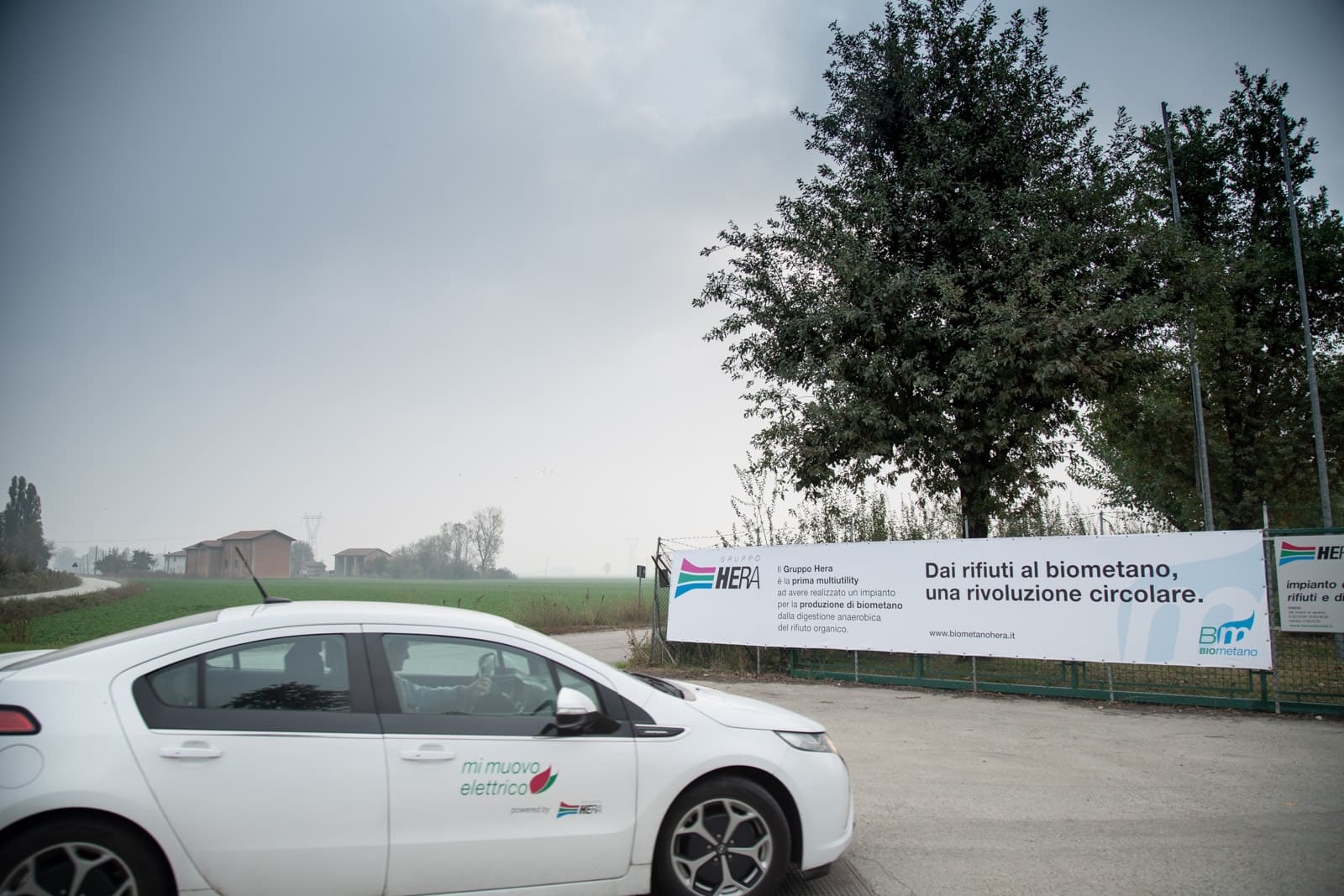
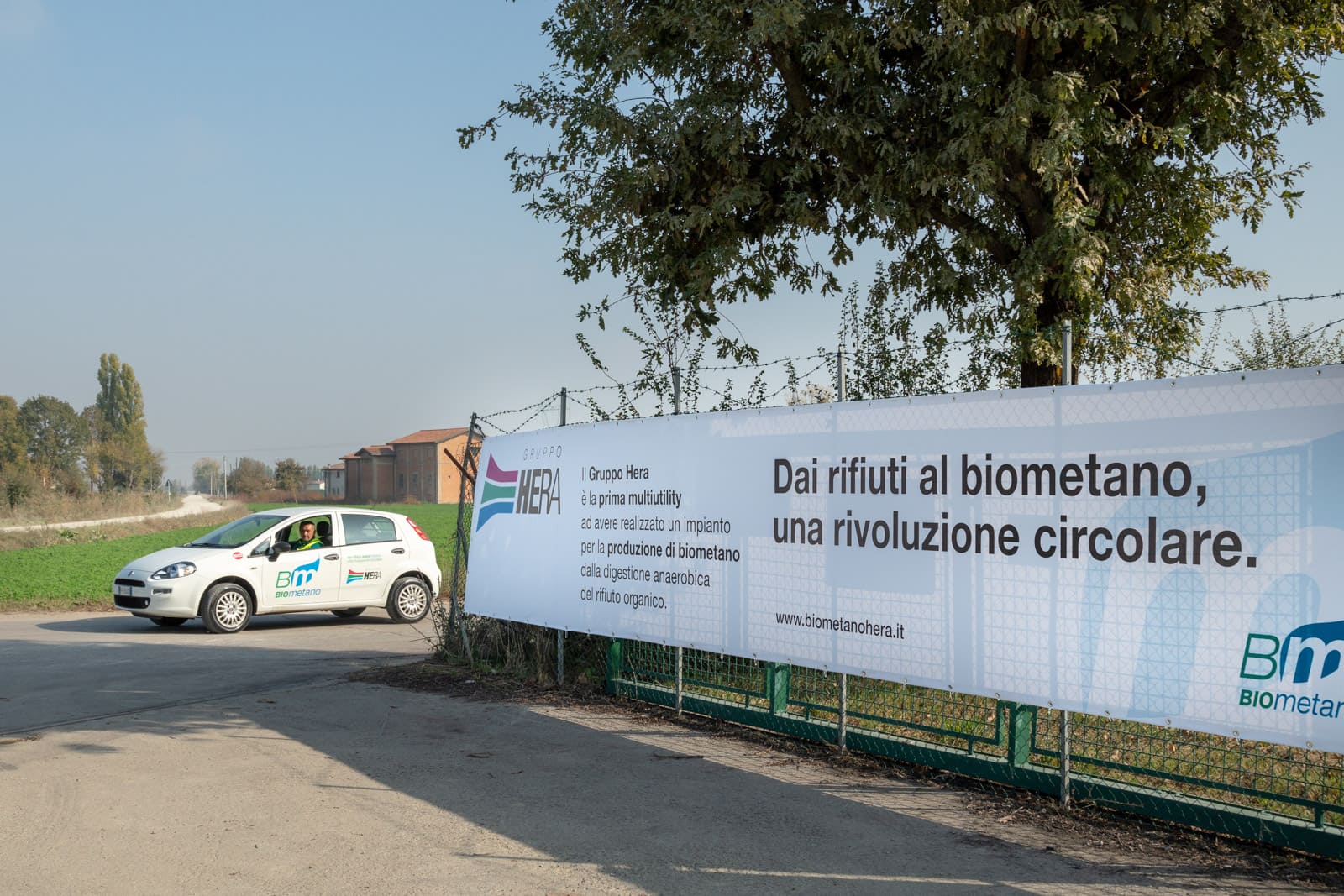

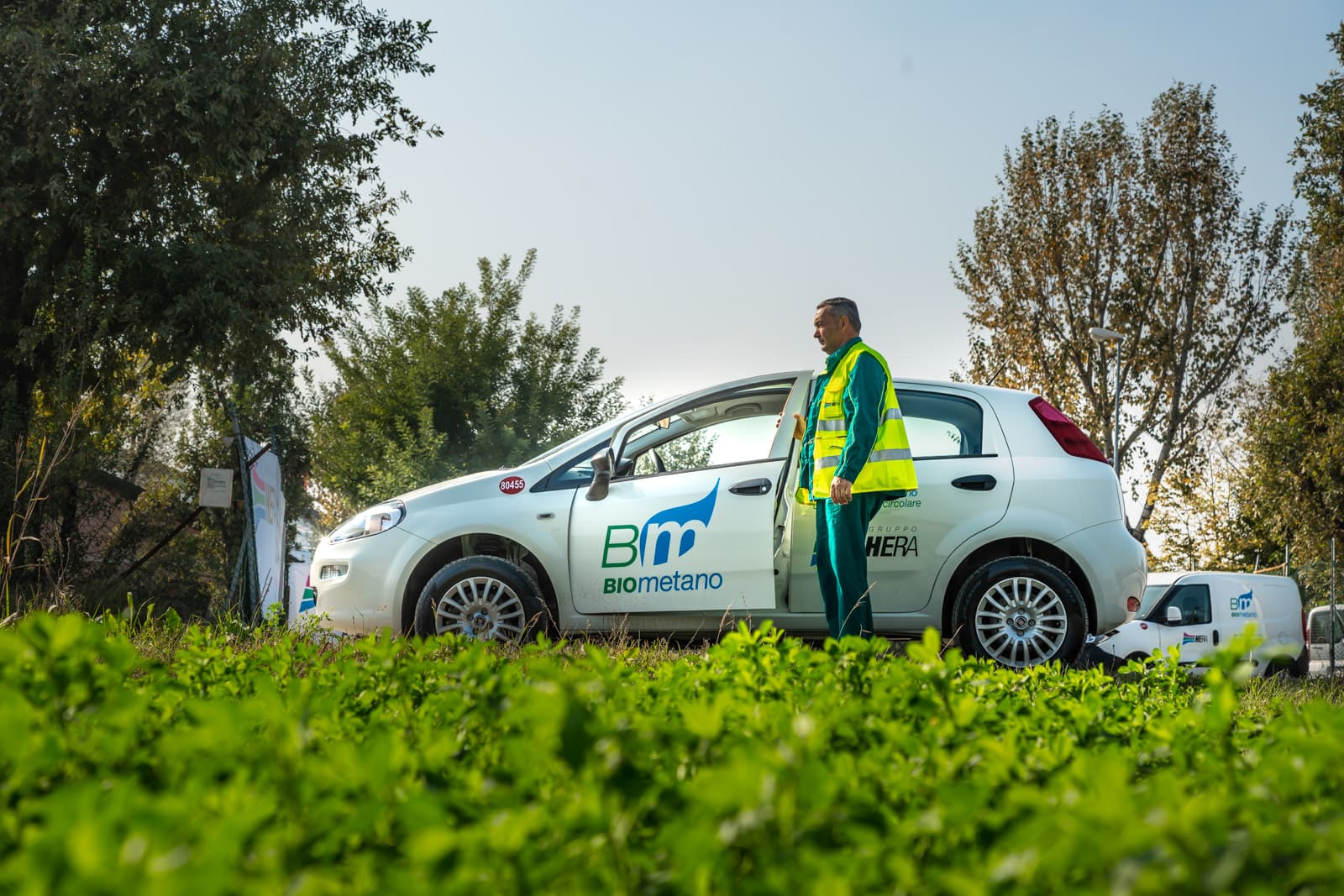
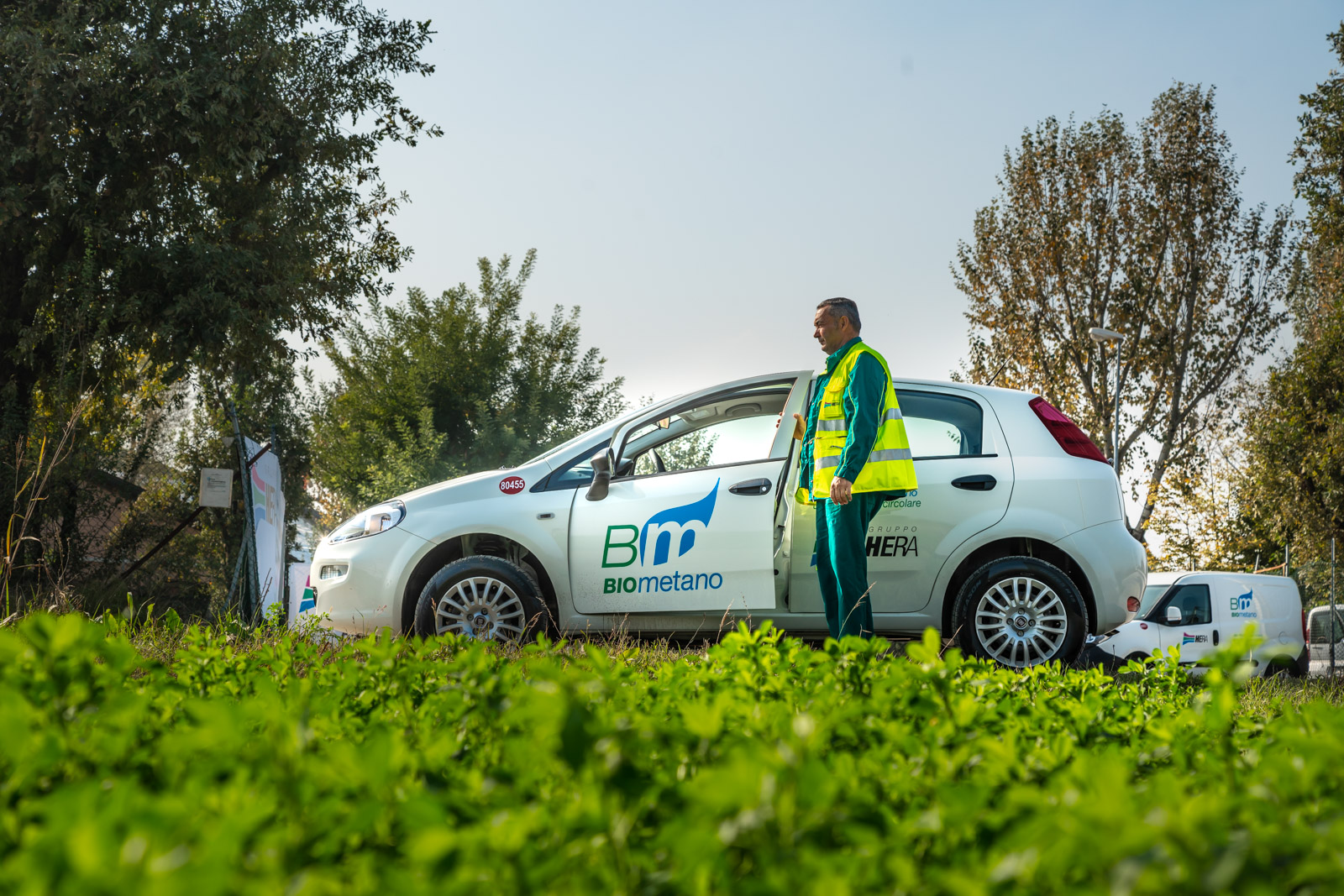


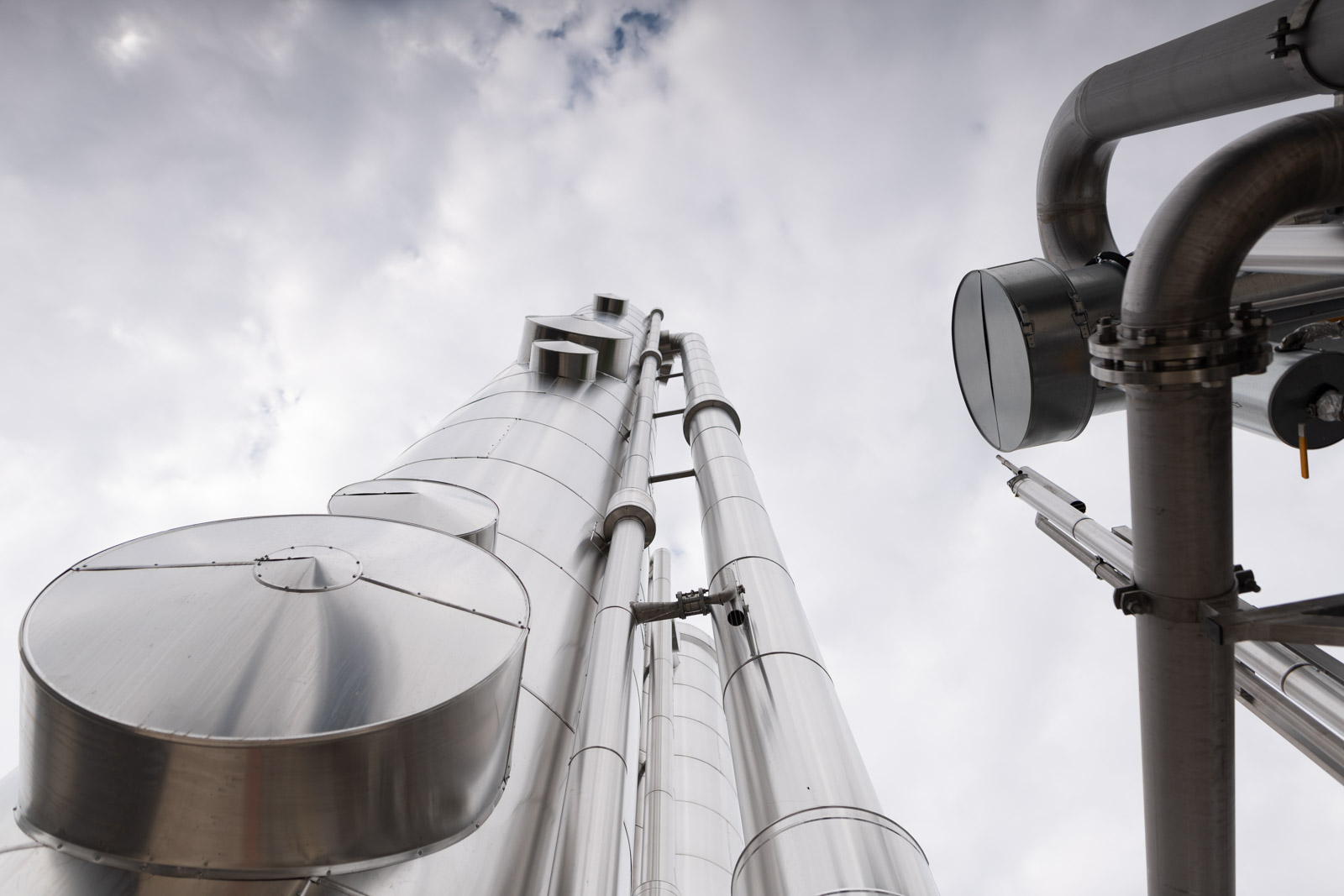
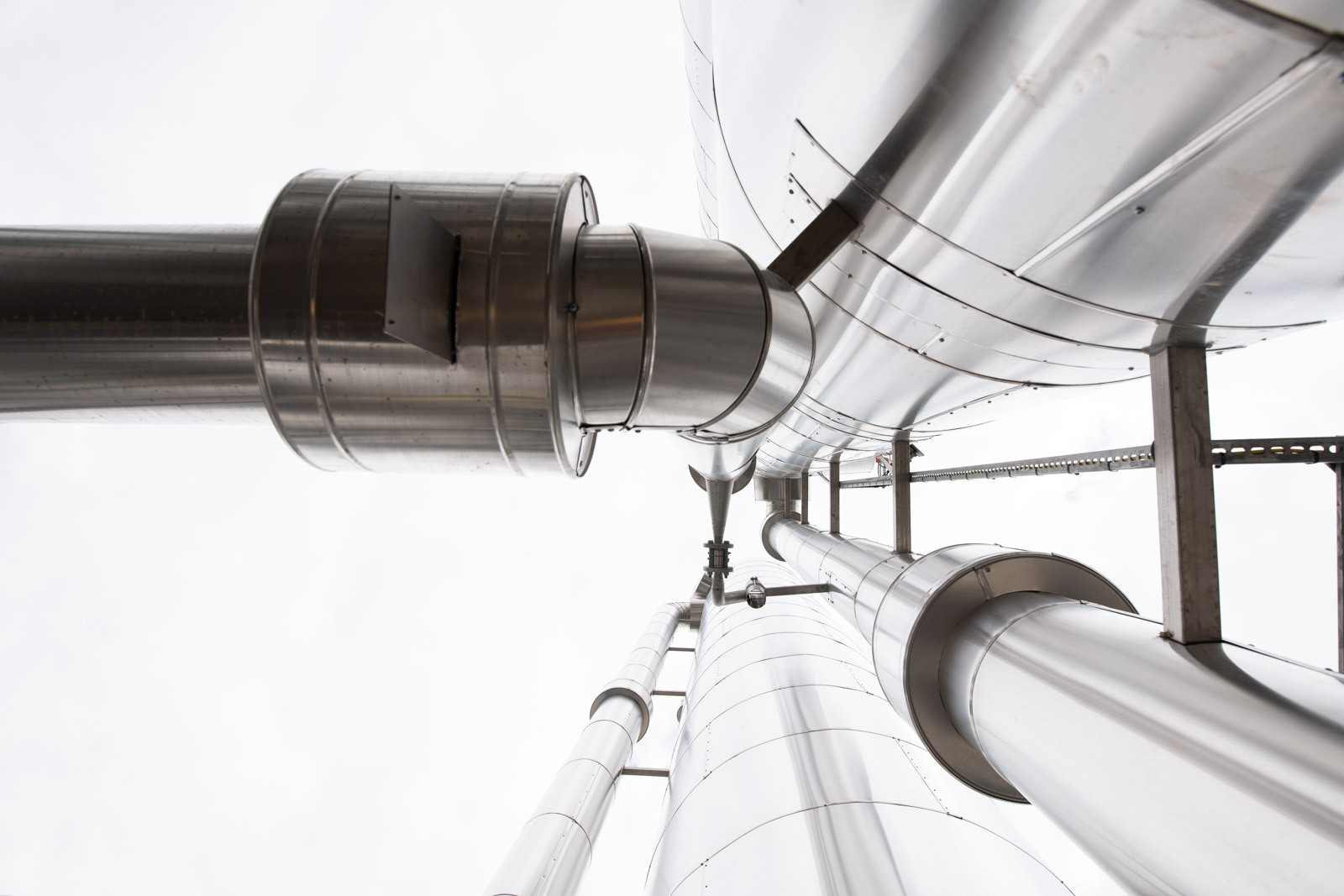

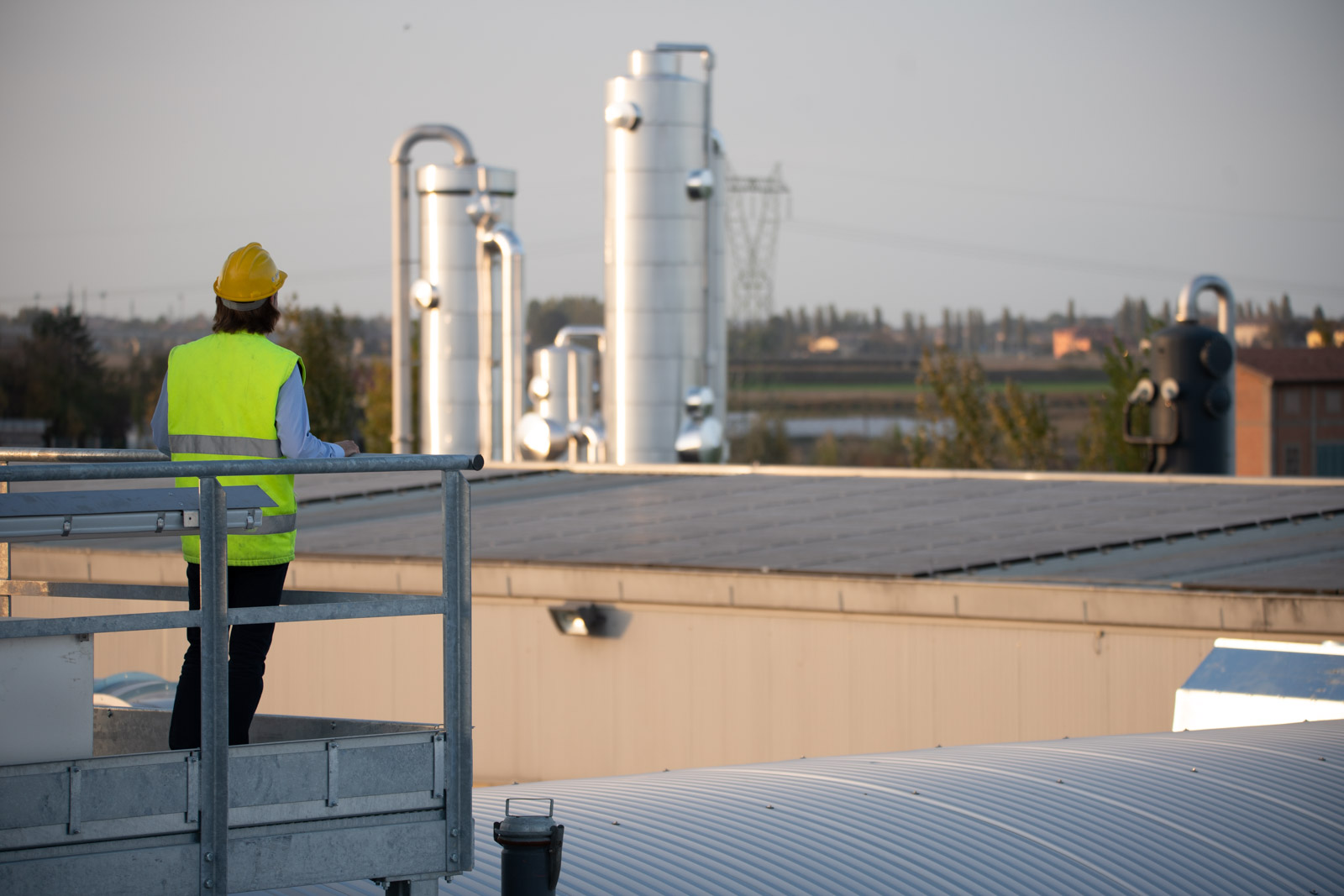
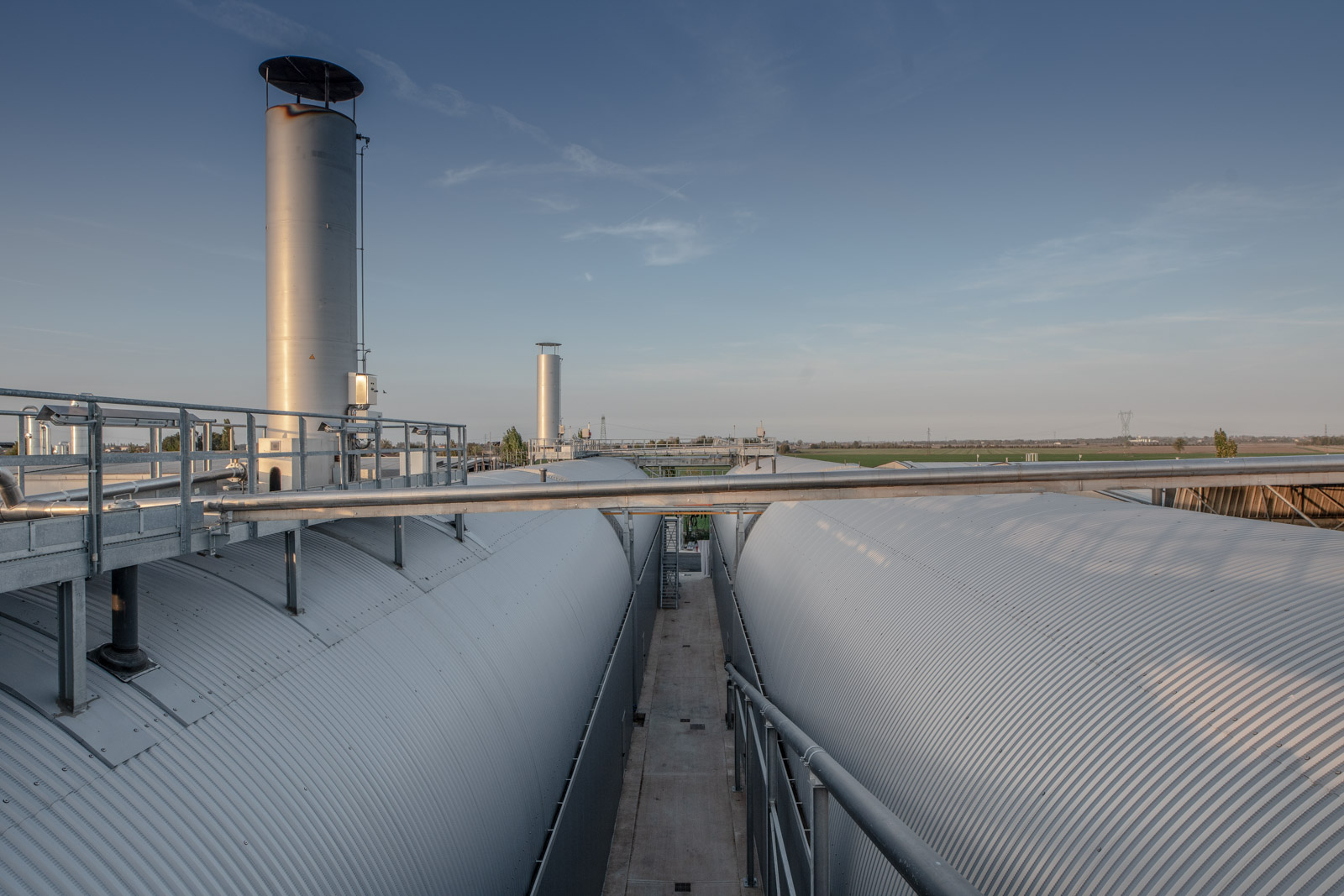
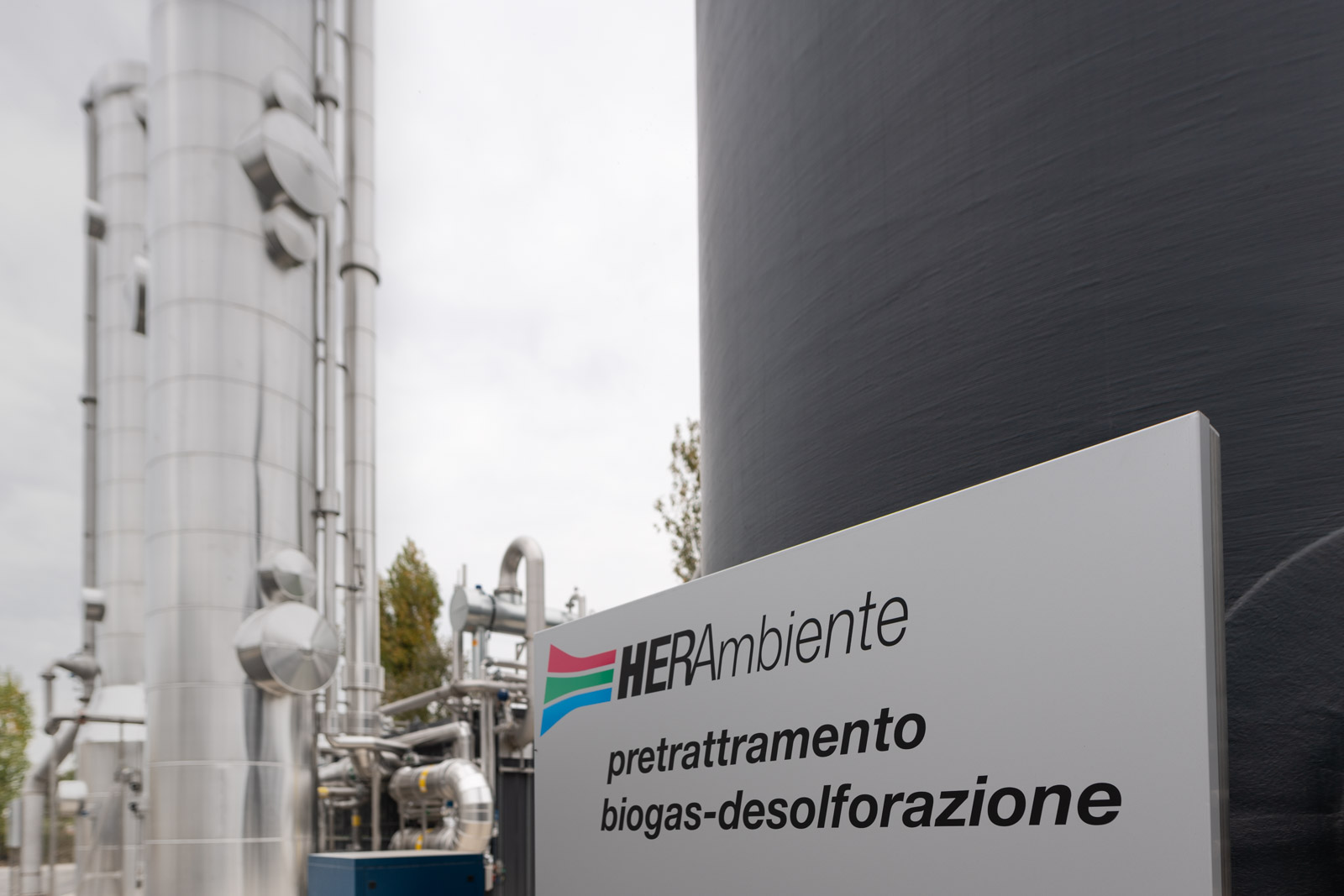
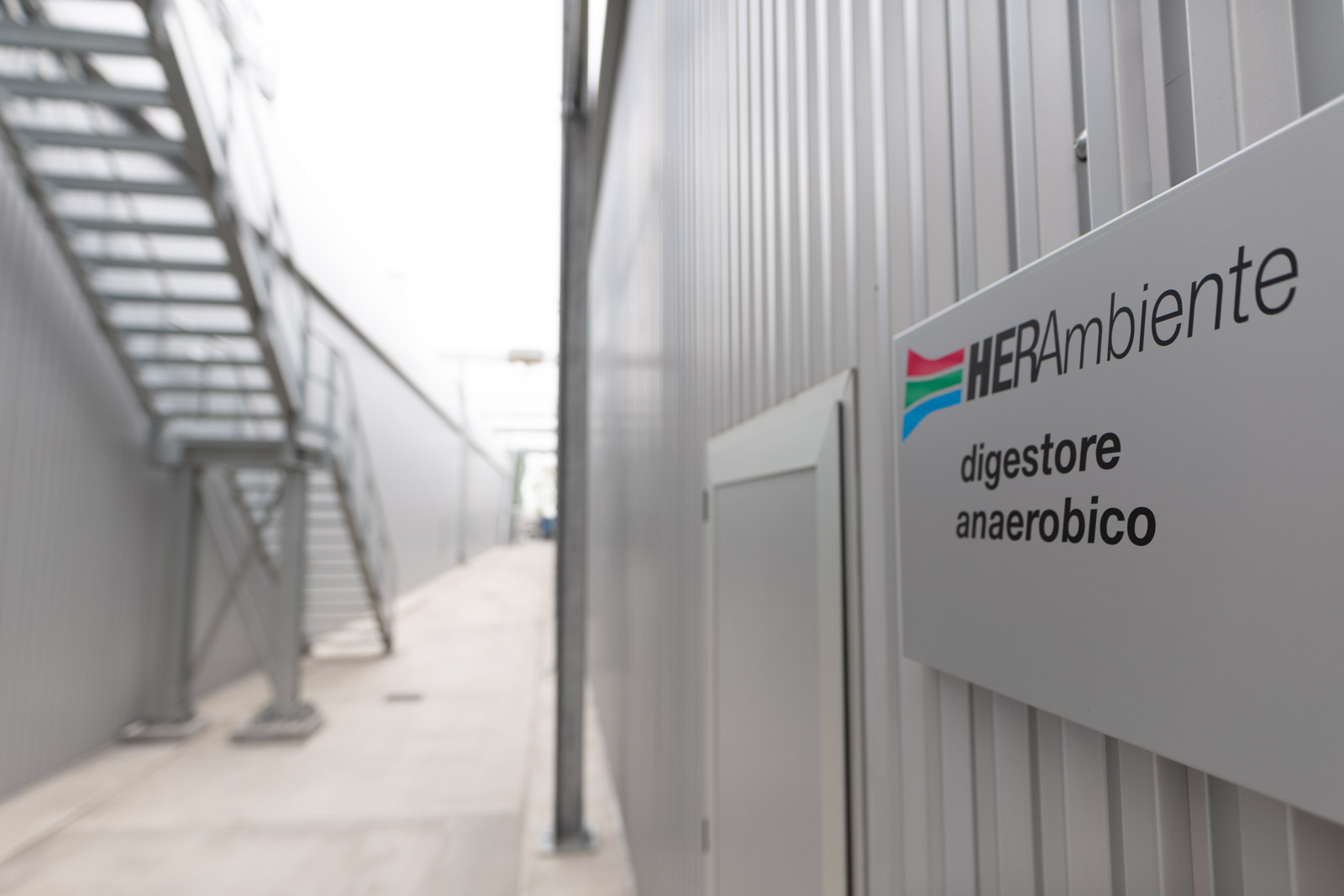

Search Bar
Tag Facet
Search Results
Asset Publisher

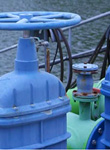
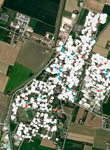
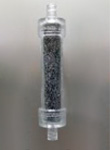
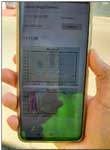
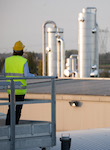
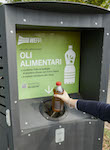

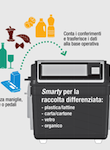


.jpg/468d051b-ba80-83a6-359d-7ef55eefd940)
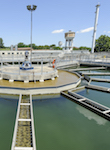
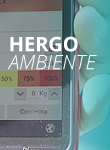
.jpeg/1d0e0770-1094-b22b-fce4-099f27c72978)